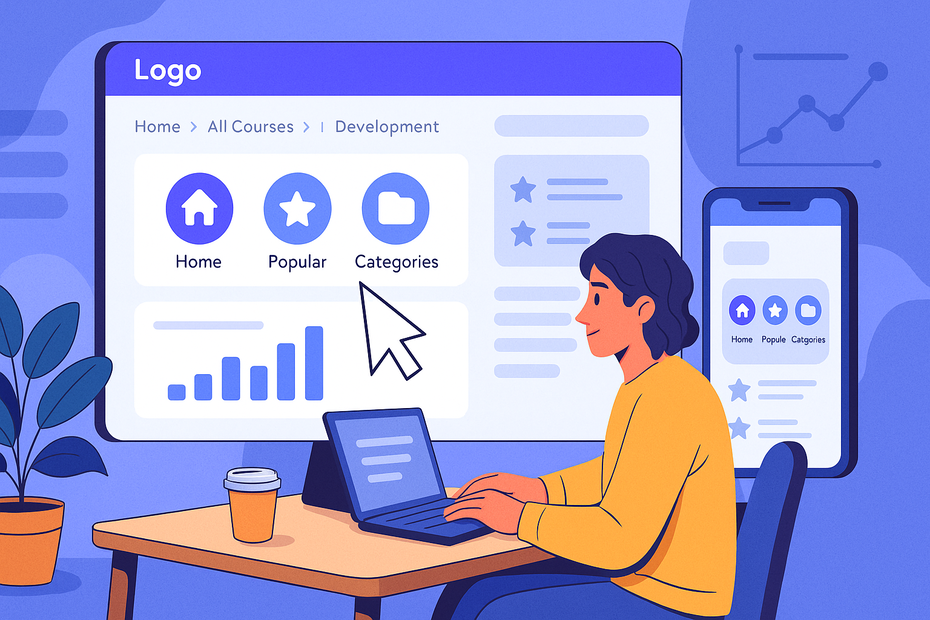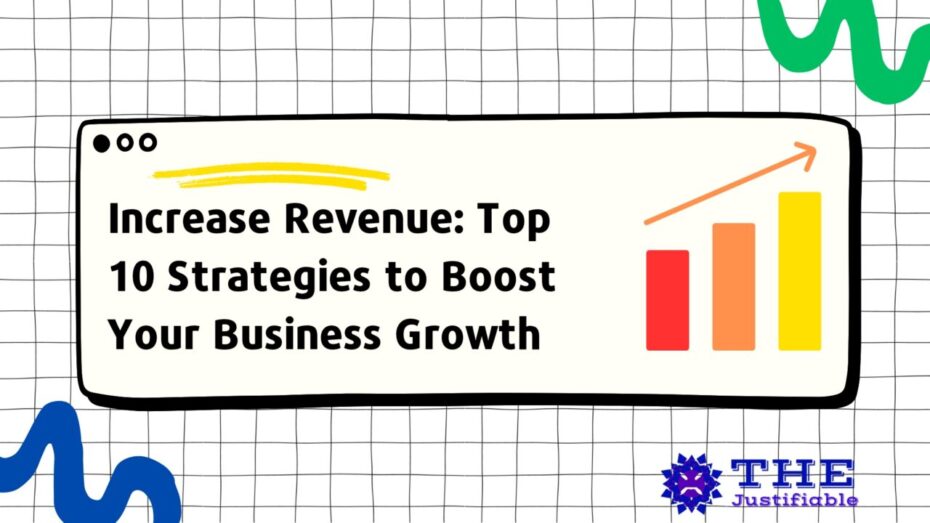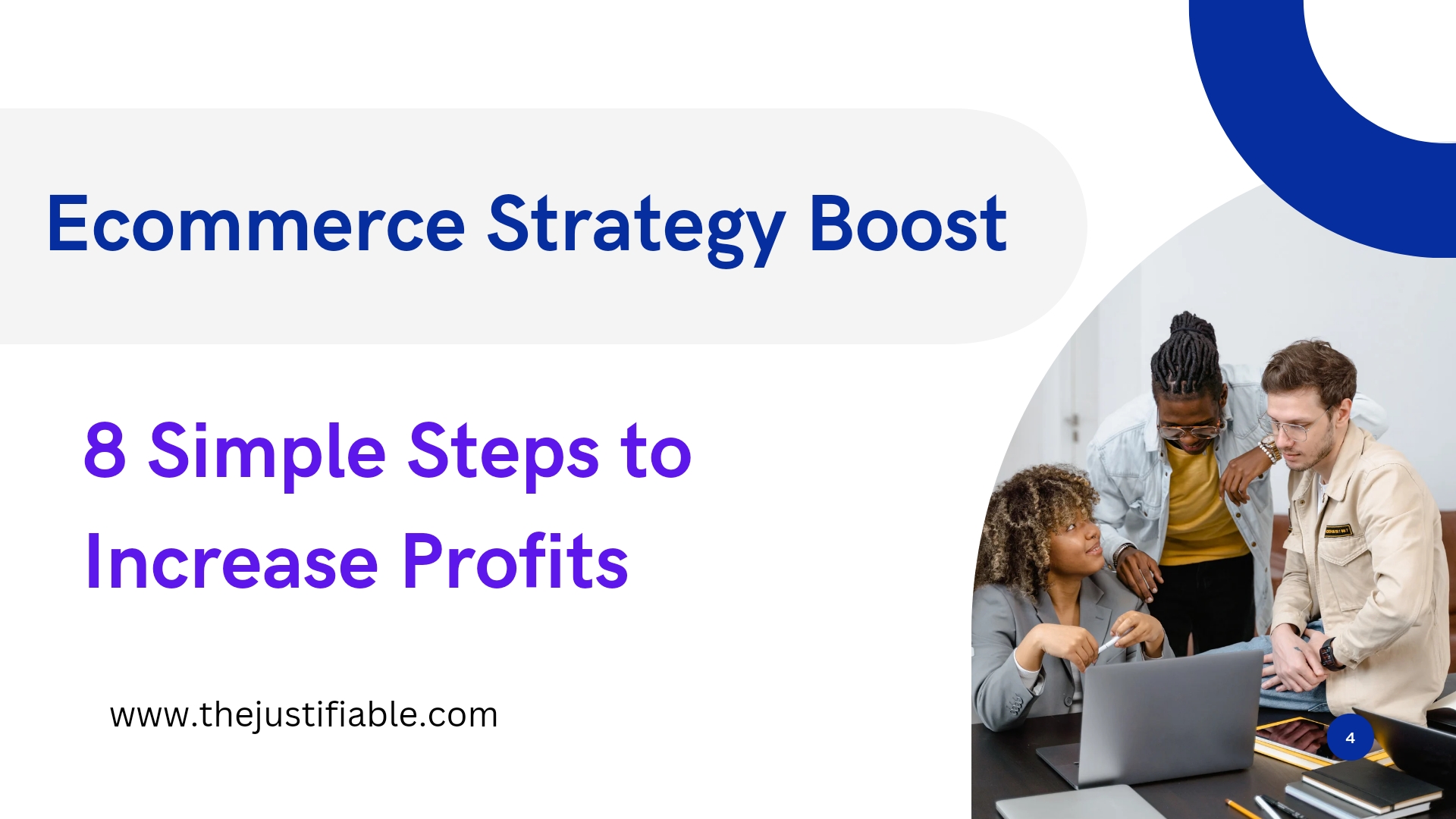Table of Contents
LearnWorlds website examples are often the best way to see what works when it comes to selling courses fast.
Have you ever wondered why some course creators grow quickly while others struggle to make sales? What design features, layouts, or strategies make a LearnWorlds site stand out?
In this guide, you’ll explore real-world examples and uncover the specific tactics they use so you can apply the same strategies to your own online school.
Clean Course Landing Pages That Build Instant Trust
A LearnWorlds landing page can either make someone click “enroll” or close the tab in under 10 seconds. The difference usually comes down to clarity, trust, and flow.
When you strip away the clutter and focus on guiding your visitor’s eye, you instantly raise your chances of making a sale.
Highlighting The Value Proposition Clearly
Think of your value proposition as the single sentence that answers: “Why should I buy this course, right now, from you?” If a visitor can’t answer that in the first 5 seconds, you’ve already lost them.
Here’s how I suggest you make it crystal clear:
- Place your course’s main promise as a bold headline above the fold. Example: “Master Video Editing in 30 Days—Even if You’ve Never Opened Premiere Pro.”
- Use a short subheadline that supports your claim with proof or detail. Example: “Step-by-step lessons with real projects, feedback, and templates.”
- Keep it specific, not vague. “Improve your skills” is forgettable. “Triple your freelance income with proven client strategies” grabs attention.
On LearnWorlds, you can edit this easily by going to your course landing page builder and dragging the Text & Heading widget.
I recommend testing two variations of your headline to see which brings in more sign-ups—LearnWorlds’ built-in analytics will show you conversion rates.
Using Testimonials And Social Proof For Authority
We humans trust strangers on the internet more than we’d like to admit. That’s why testimonials, reviews, and case studies are gold. They do the selling for you.
Practical ways to weave them in:
- Add a Testimonials widget right under your course description. Don’t just include “John said it was good”—use full quotes with photos and job titles if possible.
- If you’ve had past students share wins (e.g., “I landed my first UX job after this course”), highlight those as mini case studies.
- Use logos of companies or media outlets if your course or students have been featured somewhere—it adds instant credibility.
A trick I’ve seen work: include a testimonial video clip. Even a 30-second iPhone recording of a happy student talking about their results feels authentic and builds trust.
Structuring Pricing And Offers For Easy Decisions
The pricing section is often where people hesitate. If it feels confusing or overloaded with options, you’ll lose sales.
Here’s a layout I’ve tested:
- Show the most popular option in the middle (e.g., “Full Access: $297”). Highlight it with a different background color so the eye naturally lands there.
- Add one lower-tier plan (like “Basic: $97”) to make the full plan feel like better value.
- If you have a premium package, put it last, but don’t overload the page with too many choices.
Inside LearnWorlds, you can structure this with the Pricing Table widget. Keep the features comparison short—no one reads long lists. Focus on 3–5 key benefits that differentiate each tier.
One more pro tip: offer payment plans. A $297 course suddenly feels more doable at $99/month. Many creators see a 20–30% increase in sign-ups just by giving this option.
Streamlined Navigation That Improves User Experience

Navigation is the skeleton of your site. If it’s messy, clunky, or overwhelming, visitors leave without ever exploring your courses.
A streamlined menu doesn’t just make your site look professional—it directly impacts sales.
Designing Simple Menus That Guide Students Smoothly
When someone lands on your LearnWorlds site, they should instantly know where to click next. Simplicity wins here.
I usually suggest:
- Keep your top navigation bar under 5 items. For example: “Courses | About | Blog | Contact.”
- Use dropdowns only if absolutely necessary, and never make them too deep. No one wants to click through 3 layers of menus.
- Place your “Enroll Now” or “Browse Courses” button on the far right—it’s the natural spot people look for action buttons.
Inside LearnWorlds, you’ll find this in Site Builder > Site Navigation. From here, drag menu items to reorder them. I often advise creating a menu just for logged-in students that shows “My Courses” and “Community” to keep it simple.
Reducing Friction With Mobile-Friendly Layouts
More than half of course buyers are browsing on their phone. If your navigation isn’t mobile-friendly, you’re instantly cutting your potential sales in half.
On LearnWorlds, your site is automatically responsive, but you should still check how your menus look on different screens. Here’s what to aim for:
- Keep button labels short so they don’t break into two lines.
- Use a hamburger menu (the three stacked lines) for small screens. But make sure your most important call-to-action—like “Enroll Now”—still appears above the fold.
- Test it on both iPhone and Android. Trust me, weird spacing issues show up on one that you won’t see on the other.
I believe even small tweaks here can add up. For example, a clunky mobile checkout button can tank conversions by 10–15%.
Organizing Categories For Faster Course Discovery
If you have more than a handful of courses, categories become your best friend. They let students find what they need without scrolling endlessly.
Here’s how to set them up effectively in LearnWorlds:
- From your dashboard, go to Courses > Categories.
- Create broad, simple labels (e.g., “Business,” “Design,” “Health & Wellness”). Don’t overcomplicate with too many niche categories.
- Use the Filter widget on your courses page so visitors can sort by category quickly.
Think of categories like a bookstore: too many shelves, and people feel lost; too few, and everything feels messy. Strike a balance that guides people smoothly.
One scenario I’ve seen: A coach with 15+ courses on leadership and productivity grouped them under three buckets—“Career Growth,” “Team Leadership,” and “Personal Productivity.” After restructuring, her course sales doubled because visitors weren’t paralyzed by too many choices.
High-Impact Visual Design That Captures Attention
Design doesn’t just make your LearnWorlds site “look nice.” It makes visitors feel something the moment they land on your page. That first impression either whispers “this looks trustworthy” or screams “click away fast.”
The good news? You don’t need to be a designer to make your course website feel polished and conversion-friendly.
Choosing Brand Colors That Support Conversions
Color psychology is real, and it’s surprisingly powerful. People make snap decisions based on the colors they see—sometimes without realizing it.
Here’s a practical way to nail your color scheme:
- Pick one primary color for calls-to-action (e.g., buttons, pricing highlights). Blue often signals trust, while green suggests growth or success.
- Choose a secondary color that complements the primary. For example, orange pairs well with navy blue.
- Use neutral backgrounds (white or light gray) so your content feels open and uncluttered.
Inside LearnWorlds, head to Site Builder > Theme Explorer > Colors. Here, you can set your global palette.
I suggest setting your call-to-action button color to something bold (like bright orange or teal). Then, test how it looks across pages.
One small trick I’ve used: keep button colors consistent across the site. If “Enroll Now” is green in one spot and purple in another, you’ll confuse people. Consistency creates confidence.
Using High-Quality Media To Build Professional Appeal
Your visuals don’t need to look like a Netflix production, but they can’t look like stock photo filler either. People instantly judge quality based on images and videos.
Here’s how to raise your visual game:
- Use course preview videos on landing pages. Even a 90-second introduction of you talking to camera builds trust.
- Replace generic stock photos with authentic images. I once swapped out a faceless stock photo of “people in an office” for real student screenshots, and conversions jumped by 18%.
- Compress large images so your site loads quickly. Slow-loading visuals are conversion killers.
On LearnWorlds, upload your videos under Course Settings > Course Media. You can also place them directly in your landing page using the Video widget. I recommend adding captions too—many people watch with the sound off.
Creating Visual Consistency Across All Pages
A scattered design makes your site feel like it was stitched together in a hurry. Consistency, on the other hand, creates a sense of professionalism and calm.
Think of it like walking into a well-organized store—everything feels easier to navigate.
Here’s how to keep it consistent:
- Use the same fonts site-wide. Inside LearnWorlds, go to Site Builder > Theme Explorer > Typography. Pick one heading font and one body font. That’s it.
- Keep image styles uniform. If you use illustrations, stick to illustrations. If you use photos, avoid mixing in random clip art.
- Align layouts across pages. For example, if your landing page headline is centered, don’t switch to left-aligned on your About page.
I’ve seen creators double trust signals just by tightening up these visual details. It may sound small, but small is what sells.
Effective Call-To-Action Placement That Drives Sales
A course site without strong calls-to-action is like a store without checkout counters. People might browse, but they’ll never buy.
The goal is to make it almost effortless for visitors to take the next step—whether that’s enrolling, signing up for a free trial, or joining your newsletter.
Positioning Buttons Strategically On Key Sections
CTA buttons work best when they feel like a natural next step in the story of your page. Too few, and people won’t know where to click. Too many, and they’ll tune them out.
Here’s what I recommend for placement:
- Above the fold: Have one strong CTA right at the top. Example: “Start Learning Today.”
- Mid-page: After you explain your course benefits, drop another CTA.
- Bottom of page: Always end with a final button—like closing the loop on your pitch.
In LearnWorlds, use the Button widget and link it to your course checkout page. I usually set the button size to “large” and center it for clarity.
One more trick: sticky buttons. These are buttons that “follow” the user as they scroll on mobile. You can create this by using the Floating Button option in the page builder.
Writing Persuasive Action Text That Converts
“Submit” is the least inspiring word on the internet. Your CTA text should feel like a mini pep talk.
Here’s how to write better action text:
- Use verbs that imply benefit: “Start Learning,” “Unlock Access,” “Get Instant Entry.”
- Add urgency where appropriate: “Join Today—Spots Limited.”
- Keep it short, no more than 4–5 words.
I often advise testing two styles: one practical (“Enroll in Course”) and one emotional (“Change Your Career Today”). Different audiences respond differently, so it’s worth experimenting.
Testing Multiple Variations To See What Works
Even seasoned course creators can’t guess perfectly which CTA will win. Testing is your secret weapon.
Inside LearnWorlds, you can track button clicks through Analytics > Events. To run a basic A/B test:
- Duplicate your landing page.
- Change only the CTA button text or color.
- Split your traffic (e.g., via ads or email) between both versions.
- Compare enrollments after 1–2 weeks.
I’ve personally seen a button color change from gray to orange boost conversions by 22%. Small shifts can mean big differences.
And here’s something I strongly believe: don’t stop testing after one success. Trends change. Audiences shift. Your best-performing CTA today might underperform six months from now. Keep iterating.
Content Marketing Integration That Builds Authority

Your LearnWorlds website isn’t just a storefront—it can also become a content hub that pulls people in, builds trust, and converts visitors into students.
When you integrate content marketing directly into your site, you create momentum that keeps attracting new learners long after your ad spend ends.
Adding Blogs And Articles To Showcase Expertise
A blog on your LearnWorlds site is one of the simplest ways to prove authority. You’re not just selling courses—you’re sharing knowledge for free, which naturally builds trust.
Practical tips to get started:
- From your LearnWorlds dashboard, go to Site Builder > Blog > Create New Post.
- Write posts that answer specific questions your ideal students are already asking. For example, if you sell a digital marketing course, write “How to Create a Facebook Ad in Under 15 Minutes.”
- Keep posts skimmable: short paragraphs, headings, and maybe a quick tutorial screenshot.
I suggest linking your blog posts back to your courses. For example, in a blog about “5 Simple Yoga Stretches,” add a soft CTA at the end: “Want to deepen your practice? Join my full 30-day Yoga Challenge Course.”
Even one blog post per week can make a difference. I’ve seen creators double their organic traffic in three months simply by committing to consistent posting.
Using Free Resources As Lead Magnets For Growth
Sometimes people aren’t ready to buy right away—but they will happily grab something free. This is where lead magnets shine.
Examples that work well for course creators:
- A downloadable PDF checklist
- A free mini-course (set up as a separate course in LearnWorlds priced at $0)
- A recorded webinar replay
In LearnWorlds, you can create a lead magnet by setting up a free course and linking it to your email marketing tool. For instance, under Marketing > Integrations, connect with Mailchimp or Kit so every free sign-up goes straight into your email list.
Once someone opts in, nurture them with a short sequence of emails. I often advise: give them 2–3 days of pure value, then introduce your paid course as the natural next step.
Linking Content Seamlessly To Course Enrollment
The biggest mistake I see? Content with no clear path to enrollment. People read your blog, download your freebie, and then… nothing.
Here’s how to close that gap:
- Place CTAs inside your content, not just at the end. For example, drop a “Start Learning” button halfway through a blog post when you’re teaching a concept.
- Use LearnWorlds’ Call-to-Action widget on blog pages to link directly to your courses.
- Create a sidebar or footer that always includes “Browse Courses” so no page is a dead end.
One scenario: I worked with a wellness coach who had dozens of blog posts but almost zero course sales. Once we added in-text CTAs every 2–3 paragraphs, her enrollment rate jumped by 15% in a single month.
Personalization Features That Boost Engagement
When your LearnWorlds site feels personal, students stick around longer, engage more, and are more likely to buy again.
Think of it as moving from “just another course site” to “a learning platform that knows me.”
Tailoring Course Recommendations To Learners
One of the simplest personalization tricks is recommending courses based on what students have already taken or viewed.
Inside LearnWorlds, go to Site Builder > Widgets > Courses. You can set it to display “Recommended Courses” on the dashboard or course landing pages. If someone just finished “Beginner Photography,” show them “Advanced Editing in Lightroom.”
I believe this works because it removes the paradox of choice. Instead of showing a wall of 20 courses, you’re nudging them toward the next logical step.
Using Dynamic Content To Increase Relevance
Dynamic content means showing different messages depending on who’s visiting.
On LearnWorlds, you can customize course page sections for logged-in users vs. visitors. For example:
- Visitors see: “Join now and get instant access.”
- Logged-in students see: “Continue where you left off.”
This small shift creates relevance without extra effort. It feels like the site “knows” where the learner is in their journey.
A pro tip: You can also segment email campaigns by tagging users based on courses they’ve enrolled in. From the dashboard, go to Marketing > Users > Tags. Use these tags to send hyper-relevant follow-ups.
Building Membership Tiers That Encourage Loyalty
Membership tiers are another powerful personalization tool. Instead of selling courses one by one, you can create bundles or levels of access.
For example:
- Bronze: Access to 1 course per month
- Silver: Access to all core courses
- Gold: All-access + live group coaching sessions
In LearnWorlds, set this up under Pricing Plans > Memberships. Students stay longer when they feel they’re getting ongoing value instead of a one-time purchase.
I know creators who shifted from one-off course sales to membership tiers and saw revenue stabilize dramatically—no more worrying about “launch spikes” and “dead months.”
Optimized Checkout Process That Reduces Abandonment
You can have the best courses and strongest marketing in the world, but if your checkout page feels clunky, people drop off at the finish line.
Streamlining the purchase process inside LearnWorlds can significantly reduce cart abandonment.
Offering Multiple Payment Options For Flexibility
Different students have different budgets and payment preferences. Offering flexibility shows you understand their needs.
Inside LearnWorlds, go to Monetization > Payment Gateways. You can set up:
- Stripe or PayPal for one-time payments
- Payment installments (e.g., 3 monthly payments)
- Subscriptions for ongoing membership access
I suggest adding at least one payment plan for higher-priced courses. I’ve seen a $500 course convert at double the rate when offered at $99/month over 6 months.
Keeping The Checkout Page Minimal And Distraction-Free
Your checkout page should feel like a straight path to payment, not a maze.
Quick checklist:
- Remove unnecessary links or navigation bars.
- Keep the form short: name, email, payment details—that’s it.
- Display security icons (“SSL secured”) for reassurance.
In LearnWorlds, edit your checkout page in Site Builder > Pages > Checkout. I always recommend previewing it on mobile. If students have to pinch and zoom to enter card details, you’re guaranteed to lose sales.
Using Guarantees And Refund Policies To Build Confidence
A well-placed guarantee reduces risk in the buyer’s mind. It says: “I believe in my course enough to take the risk off your shoulders.”
Practical examples:
- “30-day money-back guarantee—no questions asked.”
- “Try the first 3 lessons, and if it’s not right for you, get a full refund.”
Add this guarantee text right next to your payment button. On LearnWorlds, you can insert a Text widget in the checkout page sidebar.
I’ve personally seen refund policies increase sales, even if refund requests remain low. People feel safer clicking “buy” when they know they have a safety net.
Community Building That Enhances Course Value

A LearnWorlds website becomes much more than a course library when you build a sense of community around it.
Students aren’t just buying lessons; they’re buying connection, accountability, and the feeling of being part of something bigger.
Creating Discussion Forums For Peer Learning
Discussion forums give your learners a space to connect, share, and learn from each other. Many times, students find as much value in peer interaction as they do in the course itself.
Here’s how to set one up inside LearnWorlds:
- Go to Communities > Create a New Community.
- Name it something clear, like “Photography Mastery Forum” instead of just “Forum.”
- Organize threads around key topics or modules of your course.
I suggest setting a friendly tone by starting the first few discussions yourself. Ask questions like:
- “What’s your biggest challenge with lighting?”
- “Share your first edited photo here.”
This makes it easy for shy students to jump in. I’ve seen forums where the instructor was barely active after the initial setup, but because the community had momentum, learners kept it alive on their own.
Adding Live Events Or Webinars To Deepen Engagement
Live events create a sense of urgency and excitement that on-demand lessons don’t always provide. Even a short monthly Q&A can massively boost retention.
Inside LearnWorlds, go to Events > Create Live Session. You can integrate directly with Zoom or Webex. From there, schedule your sessions and add them to your course calendar so students can RSVP.
Some ideas that work well:
- Weekly “office hours” where students can bring questions.
- Monthly expert guest sessions.
- End-of-module workshops to celebrate progress.
I’ve found that when students know they’ll see you live, they’re more motivated to finish lessons so they can ask smarter questions. It creates a rhythm that keeps them engaged.
Encouraging Student Contributions To Build Belonging
People engage more deeply when they feel like co-creators, not just consumers. Encourage learners to contribute their own knowledge.
Ways to do this:
- Ask students to post their projects in the community for feedback.
- Create peer-to-peer challenges (e.g., “Share your 3-minute video pitch this week”).
- Spotlight student success stories in your newsletters or forum posts.
In LearnWorlds, you can also enable User-Generated Content in the community so learners can post text, images, or even videos.
One coach I know started featuring “Student of the Month” in her community, giving a small prize like a free coaching call. The result? Her engagement rates doubled, and students began motivating each other to participate.
Analytics And Tracking Tools That Guide Growth
Guesswork is dangerous when it comes to running an online school. LearnWorlds gives you powerful analytics so you can see what’s working, what’s not, and where you’re losing students.
Data takes the guesswork out of growth.
Measuring Course Page Performance With Data
Your course landing pages are where students make the buy-or-bounce decision. Tracking performance helps you tweak for better results.
Inside LearnWorlds, go to Analytics > Pages. Here you’ll see:
- Page views
- Average time on page
- Conversions
If you notice people are spending time on a page but not buying, it’s usually a CTA or pricing issue. If they’re bouncing in under 10 seconds, your headline or design isn’t hooking them.
I recommend creating a simple spreadsheet where you track conversion rates weekly. Over time, even small 1–2% improvements can mean big jumps in sales.
Identifying Drop-Off Points In The Sales Funnel
It’s frustrating when people add a course to cart and then vanish—but it’s also fixable. LearnWorlds helps you spot exactly where this happens.
Head to Analytics > Funnel. This shows the journey: landing page → checkout → purchase. If you see a big drop between checkout and purchase, that signals friction (like too many form fields or unclear guarantees).
I’ve worked with creators who shaved checkout fields from 8 to 3 and instantly saw completion rates climb. Sometimes the simplest fixes bring the fastest results.
Using Insights To Continuously Refine Strategy
The goal isn’t just to track numbers—it’s to act on them.
Here’s a simple cycle I use:
- Pick one metric (like checkout conversion).
- Make one change (shorter form, new CTA, etc.).
- Measure the impact for 2–4 weeks.
- Keep what works, discard what doesn’t.
LearnWorlds also integrates with Google Analytics and Facebook Pixel under Settings > Integrations. If you’re running ads, this lets you see which campaigns bring in actual paying students—not just clicks.
I strongly believe this iterative mindset is what separates stagnant course sites from those that keep growing year after year.
Real LearnWorlds Website Examples To Inspire You
Sometimes the best way to learn is to see what others are doing right. These LearnWorlds website examples show how different niches approach design, community, and selling strategies that actually work.
Example Of A Coaching Business Website Layout
A business coach I worked with built her site around simplicity. Her homepage had just three key sections:
- A hero banner with her tagline: “Grow Your Business With Confidence.”
- A short video introducing her.
- A bold “Start Coaching Today” button.
She used LearnWorlds’ Pricing Table widget to offer both 1:1 coaching and group programs. By keeping the design uncluttered, she saw higher conversion rates compared to her old site that was filled with long text blocks.
Example Of A Fitness And Wellness Course Platform
A wellness trainer used LearnWorlds to create a subscription model. Instead of selling individual courses, he bundled yoga, nutrition, and meditation into one membership.
Features he leveraged:
- Daily video lessons scheduled through Drip Content.
- A community forum where members posted meal photos and progress updates.
- Monthly live workout sessions integrated with Zoom.
This all-in-one structure kept members engaged and reduced churn. Many stayed subscribed for 6+ months, which is rare in the fitness niche.
Example Of A Professional Skills Training Academy
A skills academy teaching coding used LearnWorlds to replicate the “bootcamp” experience online.
Their setup included:
- Clear course categories (Frontend, Backend, Data Science).
- Interactive assignments with built-in quizzes.
- Certificates of completion that could be added to LinkedIn.
They also personalized recommendations so beginners were nudged toward starter courses, while advanced learners were directed to specialized tracks. This created a tailored feel that boosted repeat enrollments.
Turn inspiration into action—[Launch your LearnWorlds course site today]
Pro Tip to End the Article: When studying LearnWorlds website examples, don’t just look at the design—study how every element (navigation, CTAs, community, checkout) is built to reduce friction and guide learners toward enrolling. Small tweaks across multiple areas often stack together to create a huge jump in course sales.






